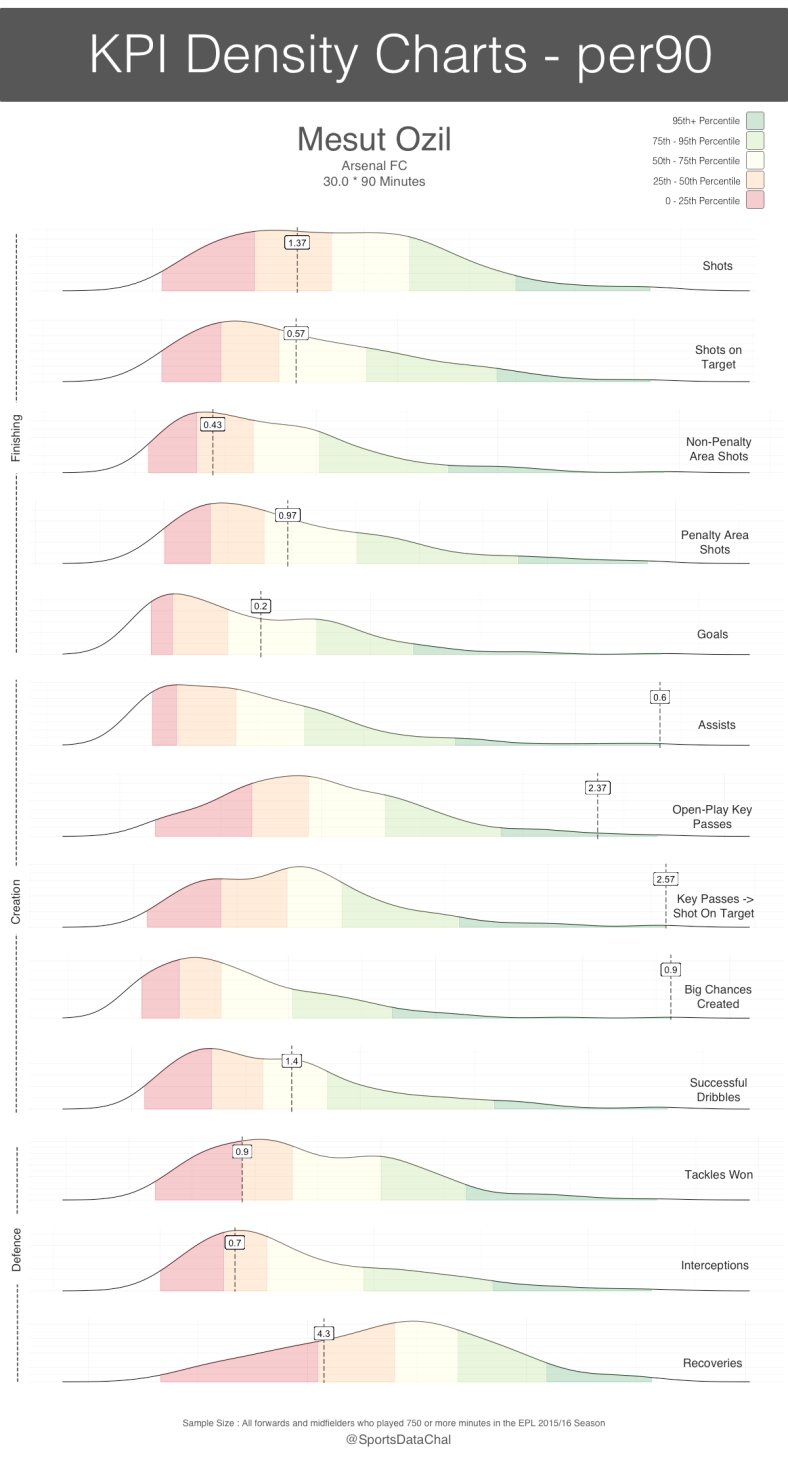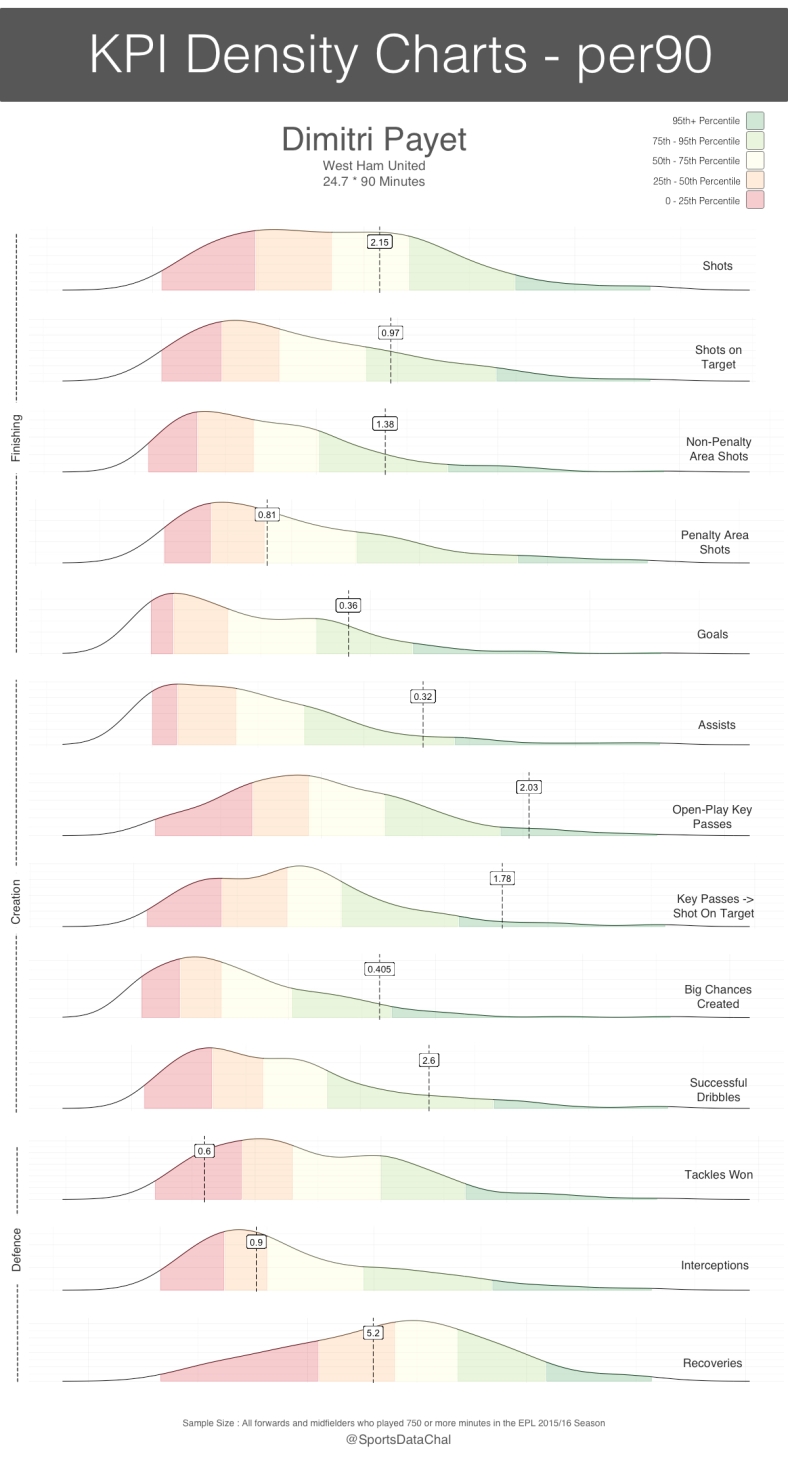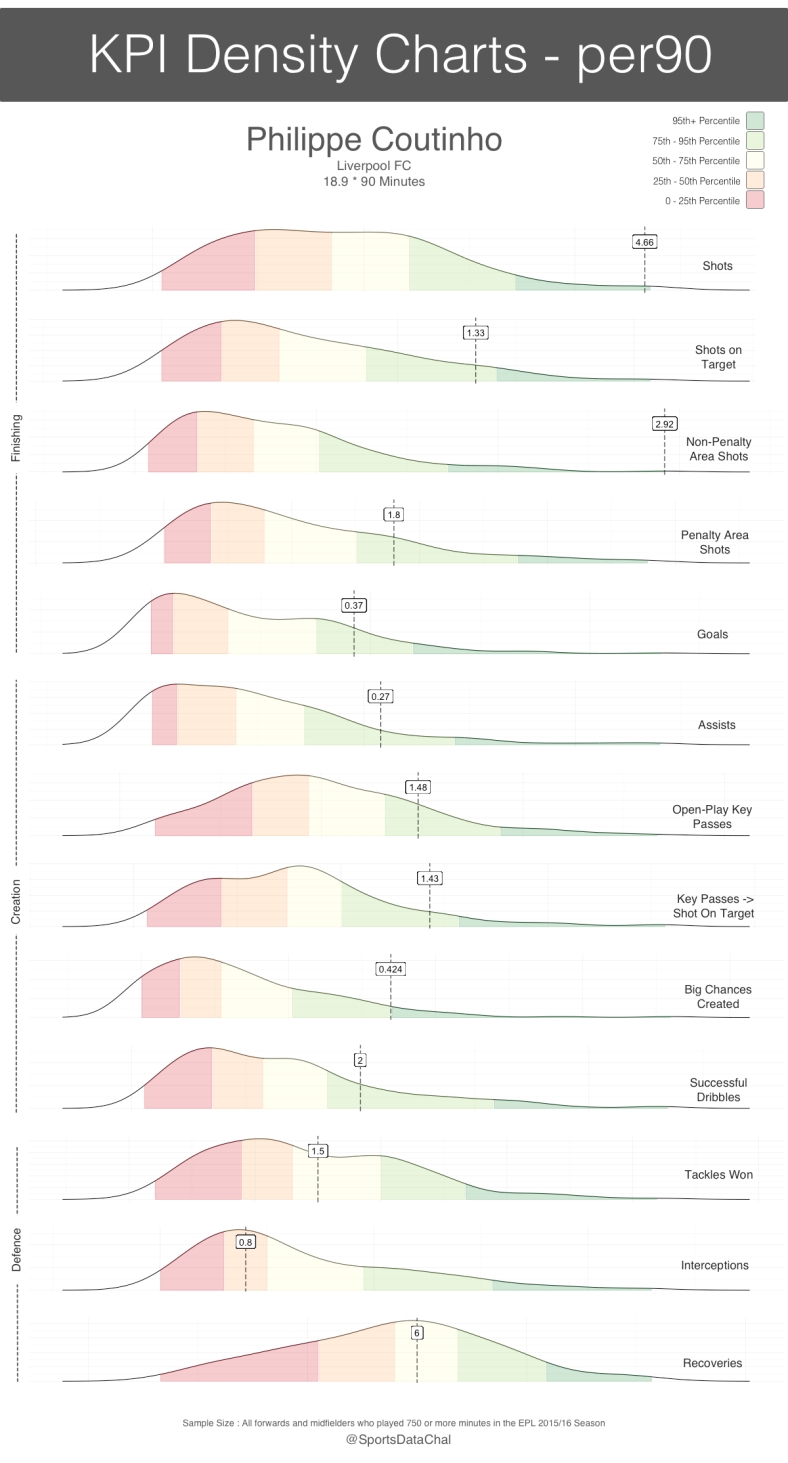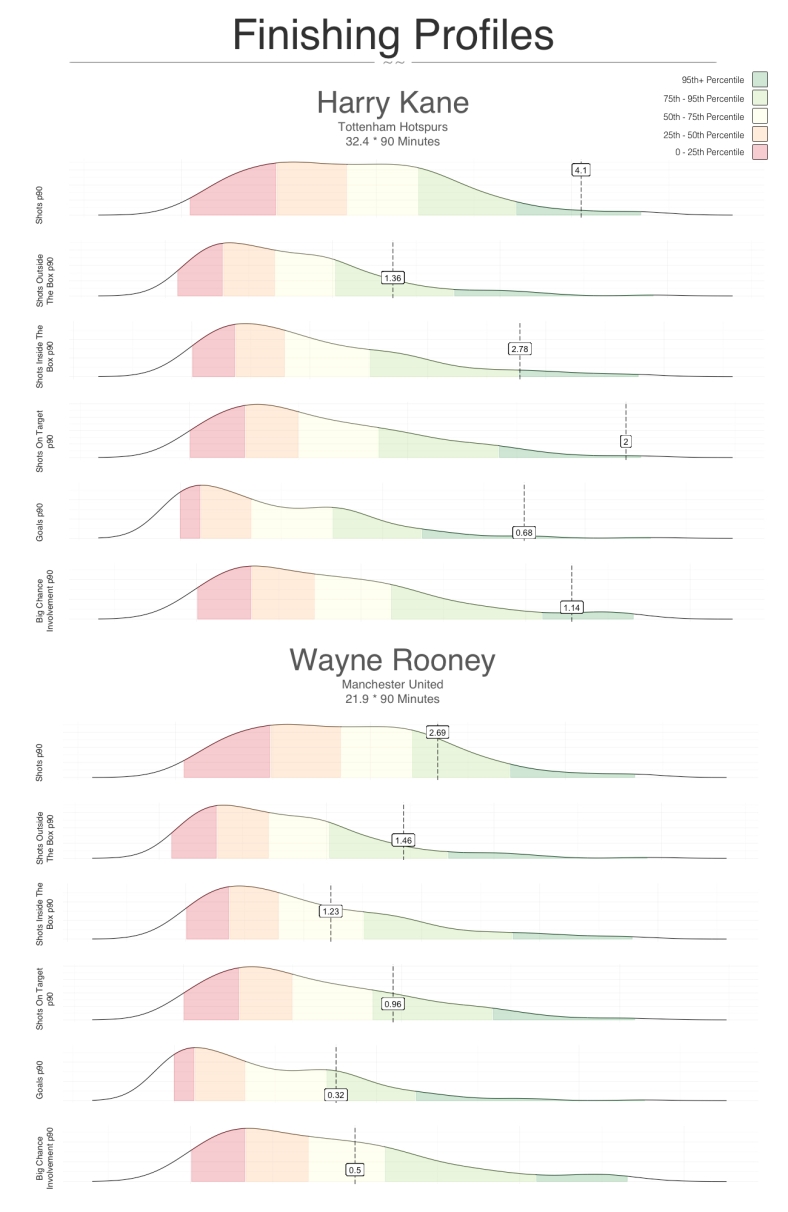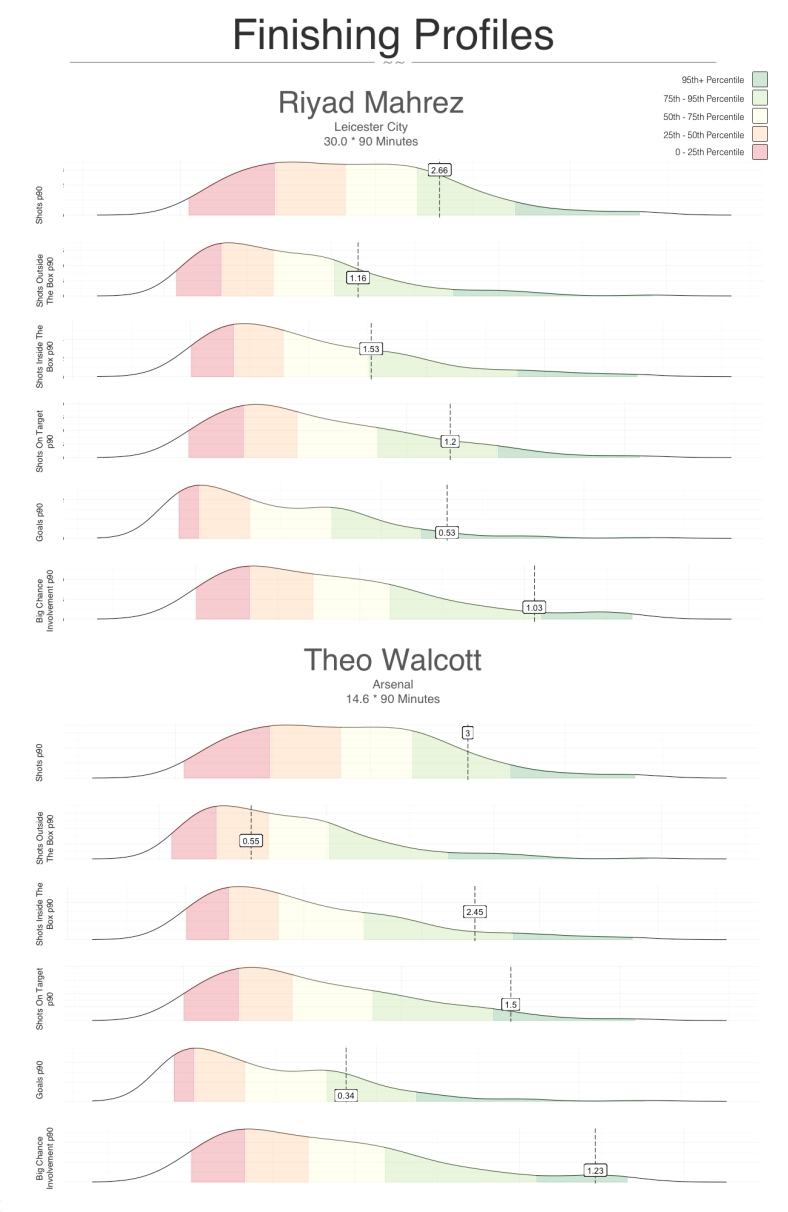On the wet streets of Manchester there is a subdued mood, United seem rudderless whilst City have been limping over the line and taken recent solace in celebrating the anniversary of Sergio Agüero’s goal against QPR. Grabbing at straws through the mist both sets of fans have clenched onto two young strikers who’s goalscoring record-sheets have been helping to absorb the fans’ tears.
Marcus Rashford and Kelechi Iheanacho have been hitting the back on the net at such an impressive rate, its created a whirlwind of excitement fuelling projections of the pair being world-class strikers of the future.
“He’s a very good young player. I see some of myself in him for sure – he has courage and he’s fast and is very good with the ball. I think for the strikers they have to be hungry to score and I see that with him. He has an amazing future”
Ronaldo (BRA) on Rashford
No doubt, an exciting narrative but how excited should the fans be? Are their performances repeatable? Expected Goals legend Michael Caley recently stirred the debate with a xG + xA / 90 graph that inspired this post.
The objective analysis of goal scorers has evolved and improved in recent years, with per90 metrics and expected goal models. Yet there also emerged some consensus that the output of goal scorers is best observed over a longer period of time, circa 18 months and 4,500+ minutes. When it comes to young strikers we don’t currently have the required sample size to reach more reliable projections of future goal scoring output. In the absence of reliable modelling there needs to be some data-stimulated debate within recruitment departments of clubs looking to invest in a young high-scoring striker.
Introducing… The STRASLE Graph (Striker’s Adrenaline-Stimulated Luck Evaluator)
The purpose of STRASLE is to help stimulate debate : Is a strikers goal scoring output sustainable and repeatable? The Actual-Expected xG -/+ and Conversion Rate is plotted for each young striker is plotted for all midfielders and forwards that have scored but played less that 1,200 minutes. The filtering does not remove older players, however STRASLE could be used to help assess goal scorers with a low number of minutes due to injury or deselection.
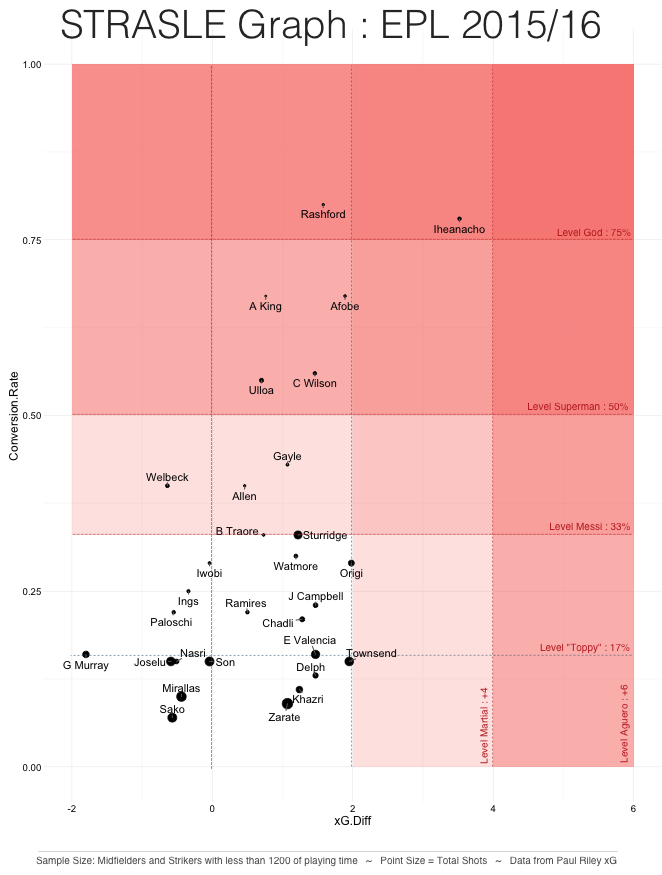
The Eye-Test
- If a club were weighing up transfers for Rashford or Iheanacho, they should proceed with caution due to both players having an unrepeatable conversion rate as well as a high Actual-Expected Goals difference.
- Daniel Sturridge shows excellent levels of performance despite his low minutes this season. Numbers which based on previous high performance in previous seasons would give a recruitment team confidence in their repeatability. This is especially due to the number of shots taken gives the conversion rate greater validity.
- Bertrand Traore, Iwobi and Origi locations would facilitate an interesting discussion.
Conclusion
Rashford and Iheanacho’s scoring output is certainly not sustainable! However, they both sit in realms of extreme conversion rates and positive xG difference. With more minutes there conversion rate will fall, their xG difference may move closer to average. The whirlwind of excitement will drop but left behind could be some amazing players.
It is therefore the job of the clubs and coaching staff to manage expectations and to keep the players working on continued improvements rather than getting swept up in the noise.
City seem to be doing this with Iheanacho…
“It was very important for Kelechi to demonstrate once again that he’s a very good player. He’s not just a striker – he provided two assists. I’m very happy for him. He has things to improve but he’s working in the correct way”
Manuel Pellegrini on Iheanacho
Notes:
- Thanks to Paul Riley for his amazing Premier League 2015/16 xG Map and Table as well as the data behind it.

